This article was co-authored by Trudi Griffin, LPC, MS. Trudi Griffin is a Licensed Professional Counselor in Wisconsin specializing in Addictions and Mental Health. She provides therapy to people who struggle with addictions, mental health, and trauma in community health settings and private practice. She received her MS in Clinical Mental Health Counseling from Marquette University in 2011.
There are 11 references cited in this article, which can be found at the bottom of the page.
This article has been viewed 34,055 times.
Scars can make you feel imperfect and uncomfortable. However, there are several ways to overcome your discomfort with your scar. If your scar is deep and visible, you might find that talking about it and exposing it to friends and family makes you feel better. You can also treat your scar to minimize its visibility. If you suffer from feelings of extreme guilt or shame due to your scar, consider consulting a therapist.
Steps
Thinking About Your Scar
-
1Ask yourself if you’re ready to expose your scar. Exposing your scars to the world is not a necessary step toward being comfortable with your scar. Some people believe that concealing the scar is an indicator of shame or discomfort. However, you can become comfortable with your scar without feeling obligated to expose it. Wait until you are ready to expose your scar. Don’t expose your scars just because someone else -- a friend, family member, or mentor -- pressures you to do so.
-
2Don’t focus on people who stare. If someone takes an interest in your scar, keep in mind that they are the exception, not the rule. In other words, every time you catch someone gazing at your scars, think about all the people who have passed you by or interacted with you and did not show visible curiosity or throw a look of judgment your way. While some people will gaze intently at your scar, most won’t care. Don’t focus on the people who look at you funny.Advertisement
-
3Realize that your physical body is only one part of you.[1] Beauty has many aspects. While having flawless skin is widely considered an indicator of ideal beauty, inner beauty is more important. Inner beauty -- the quality of your personality -- defines who you are in a way that your physical form does not. By staying conscious of the fact that your external appearance is not as important as the real, inner you, you will become more comfortable with your scar.
- Make a "soul collage” -- a visual representation of who you are on the inside. Include images of your hopes, aspirations, talents, and dreams. For instance, if you long to travel the world, include images of far-away places in your collage. If you consider yourself a loving person, include images of tender scenes like a mother bear feeding her cubs.
-
4Embrace your scar.[2] Use the scar as a reminder of the pain you survived. Look for a meaningful connection to the scar tissue.
- If your scars are self-induced, you might use the scar to remind yourself that you have moved beyond the pain that drove you to cut yourself.
- If your scars are from a surgery or a painful accident, remember that you made it through even though it was difficult. As the old saying goes, what doesn’t kill you makes you stronger.
Exposing Your Scar
-
1Examine your scar when you’re alone. Look at your scar when you’re at home. If necessary, close the door. Remove any makeup or jewelry that may be covering your scar. Try to spend more time at home with your scar(s) uncovered. This will make you more accepting of and comfortable with your scar.
-
2Start slowly when revealing your scars. If you have a scar on your arm, for instance, you might wear long-sleeved shirts every day. To begin feeling more comfortable with your scars, try wearing a short-sleeved shirt one day each week. If you have success wearing the short-sleeved shirt once a week, move forward and try wearing short sleeves twice the next week. Continue in this way until you have become more comfortable with showing your scar in public.
- Perhaps you could show your scar to a friend before revealing it to the whole world. Your friend should offer you a supportive reaction. This will build your confidence and prepare you better for revealing your scar to the general public.
-
3Reveal your scars during exercise. When exercising, it might be difficult to conceal your scar. Don’t make extreme attempts to conceal your scar when working out. For instance, it would be unusual to wear long sleeves to the gym, or when riding your bike on a hot day. Dressing in this way would draw more attention to you than riding about openly with your scar revealed.
-
4Prepare for questions about your scar. When you have a significant and noticeable scar, people who are curious about it might approach you with questions. For instance, you might be asked, “How did you get that scar?”, “Did it hurt?”, or “When did you get it?”
-
5Prepare for people to not notice. If you have decided to reveal your scar after covering it for a long time, you will probably consider doing so as an important personal milestone. You may have prepared for the hard questions people might confront you with about your scar. However, for every person who chooses to stare and ask you about your scar, chances are there are far more who will not notice or care that you have a scar.
- While generally it’s good that people don’t pester you about your scar, you may feel upset or have mixed emotions about this experience. You might feel that your pain doesn’t matter to others, or feel disappointment that there was not more excitement surrounding your decision to unveil the scar.
-
6Develop a backup plan. If you choose to expose your scars, but for whatever reason begin to feel uncomfortable while doing so, ensure you can cover them up again quickly if necessary. For instance, if you go out one day with your scar exposed and start to feel awkward due to people staring at you, put on a sweater to cover the scar. This way, you won’t continue to attract unwanted attention.
- Don’t back out of exposing your scar too quickly. Even if it feels awkward or difficult a first, sticking it out is a good way to build confidence.
Talking About Your Scar
-
1Decide what you want to share about your self-inflicted scar.[3] If you have a self-inflicted scar or scars, people (including teens) might ask you about it out of curiosity, or because they know someone who has a self-inflicted scar themselves. Talking candidly about your scar can help you become more comfortable with it, but listen closely to the person’s tone and line of questioning to decide what you want to share with the person who is asking.
- Perhaps the curious individual is engaging in self-harm themselves and asking you about it because they have nobody else to talk to about it.
- Stay attuned to the tone of the conversation and delve deeper with the person if possible. You could, for example, say to them, “This scar is a reminder of a rough patch I went through. Do you know anyone who has engaged in self-harm?”
- Use these conversations as opportunities to educate and inform others about the difficulties of self-harm and related scars.
- Talking through your experience with others can often help you feel more comfortable with your scar and might inspire someone else to make a positive change.
- Do not share information about your scar if you are not comfortable doing so.
-
2Talk to your friends about your scars. Good friends will support you and be understanding of the difficulty you have in opening up about your scar. You should also direct your friends about what to say if someone asks them about your scar.
- People often feel uncomfortable asking about something obvious but private like a scar. Curious people who don’t know you well may, therefore, ask your friends what happened instead of asking you.
- Provide your friends with directions about how you’d like them to answer these questions.
- For instance, if you want to maintain control over the distribution of information regarding your scar, you should tell your friends to direct all questions to you. Your friends might answer a question about your scar by saying, “I don’t think my friend would appreciate me talking about it. You will have to ask him/her.” This is a good option when the scar is personal.
- Role play with your friends to ensure they understand your wishes about what is acceptable to share about your scar. Pretend to be a stranger asking for information about your scar and ask probing questions.
- Talking to your friends about your scar can show your friends that you trust them with sensitive information and help deepen your friendship.
-
3Don’t feel obligated to talk about your scars.[4] If a stranger or acquaintance approaches you and expresses interest in how you received your scar, you might not want to share the story with them. Politely but firmly deny their request for further information by saying, “I don’t want to talk about it,” or “Thank you for your concern, but that is a private matter.” Do not share information with people you don’t feel comfortable sharing with.
-
4Network with others who struggle with their scars.[5] Sharing stories and feelings about having a scar can help your normalize your own experience. The Scar Information Service offers a long list of scar-related groups on its website at http://www.smith-nephew.com/awm/scar-info/useful-contacts/scar-related-organisations/. Consult this list and search for a support group near you.
- If you don't find a group near you, consider starting one, or joining a general group for individuals with body image issues.
- You might also have success looking for groups related to your specific type of scar. For instance, you might be able to talk about breast cancer scars in a breast cancer support group.
-
5Consult a therapist.[6] You might be uncomfortable with your scar because it causes you embarrassment or shame. In order to work through those issues and confront your feelings about the scar, you may need to speak with a therapist. Therapists are specially trained to help you confront the complicated feelings you have about your scar.
Minimizing Your Scar
-
1Start with scar treatment immediately after the wound has healed.[7] The first six months of a scar’s healing are the most important for determining how well it will heal over the long term. Therefore, you should begin scar treatment as soon as possible after healing is complete.
- If your wound is still stitched up or bandaged, don’t apply any cream or other treatments.
- Always clean the scarred area before applying cream or other treatments.
-
2Apply silicone gel. Silicone can reduce scar tissue and may even prevent hypertrophic scar formation.[8] A hypertrophic scar is one that is raised and stands out from the rest of your skin.[9] Apply a small amount of gel to your scar and rub gently twice each day for up to three months. Silicone gel has been proven to reduce discoloration and elevation of skin due to scarring.[10] Silicone gel is readily available at your local pharmacy.
-
3Massage the scar gently. Place your index and middle fingers over your scar and rub gently in a circular motion. Do this once daily for about three months after surgery. Massaging the scar has been shown to reduce both pain and visibility of recovering scar tissue.
-
4Apply a moisturizing cream. If the skin around a wound produces excess collagen -- a naturally occurring protein -- your scar will be raised, making your skin uneven. Moisturizing creams improve the skin’s ability to recover from a wound and encourages a balanced production of collagen around the wound. There are many moisturizing creams available.
- Take a small dab on your fingertips and massage it gently into your skin using a circular motion. Do this twice daily in five-minute sessions. Any moisturizing cream will work to help you treat your scar.
-
5Use sunblock. Since scarred skin does not contain the normal pigments the rest of your skin does, it burns easily. Furthermore, your sun-exposed scar is more likely to become and remain darker than the rest of your skin if you do not use sunscreen. Therefore, using sunblock when you go outside for a significant length of time is recommended for at least one year after receiving the scar.[11]
- Use a sunscreen of at least SPF 35.
- Rub the sunblock on your scar in a circular motion with the tips of your fingers.
Warnings
- Be mindful of any allergies or sensitivities you may have to a given cream or lotion.⧼thumbs_response⧽
References
- ↑ http://tinybuddha.com/blog/finding-beauty-in-your-scars/
- ↑ http://tinybuddha.com/blog/finding-beauty-in-your-scars/
- ↑ http://www.selfinjury.bctr.cornell.edu/perch/resources/wounds-heal-pm-2.pdf
- ↑ http://www.selfinjury.bctr.cornell.edu/perch/resources/wounds-heal-pm-2.pdf
- ↑ http://www.corience.org/living-with-a-heart-defect/teenagers/health-sports-fitness/scar-worries/
- ↑ http://www.huffingtonpost.com/2012/02/13/beautiful-scars-photos_n_1263149.html
- ↑ https://www.mdedge.com/surgery/article/55456/aesthetic-dermatology/early-scar-treatment-critical
- ↑ https://www.ncbi.nlm.nih.gov/pmc/articles/PMC4486716/
- ↑ http://www.aocd.org/?page=KeloidsAndHypertroph







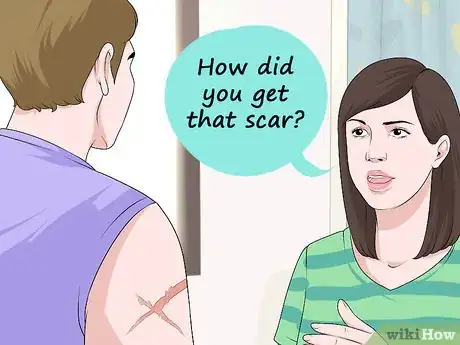







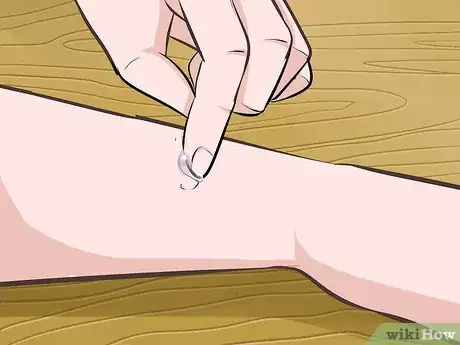
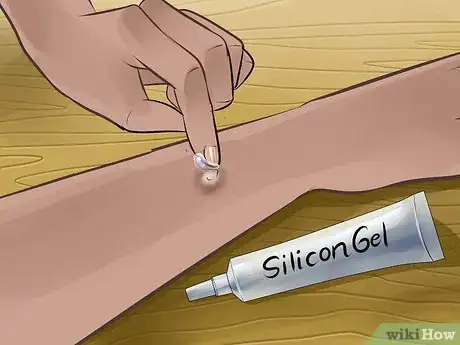
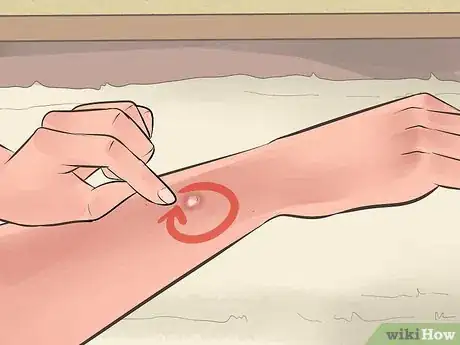

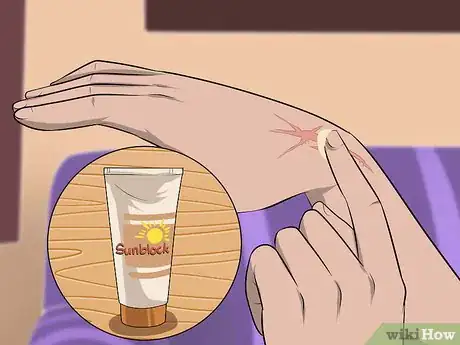

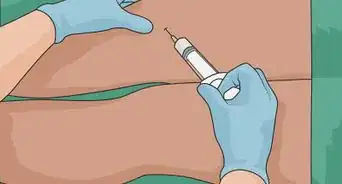




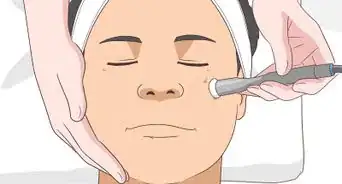






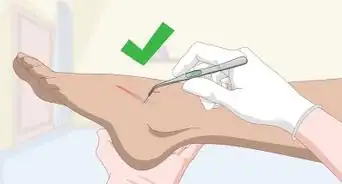








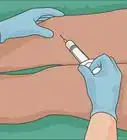





































Medical Disclaimer
The content of this article is not intended to be a substitute for professional medical advice, examination, diagnosis, or treatment. You should always contact your doctor or other qualified healthcare professional before starting, changing, or stopping any kind of health treatment.
Read More...